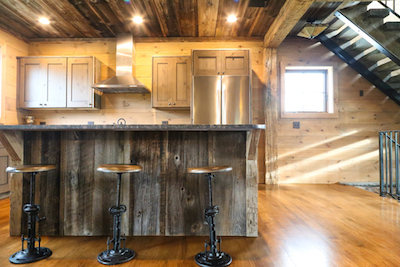You love your hardwood flooring. But what about those unsightly fisheyes you see periodically throughout the room? What causes them? Can you get rid of them?
Fisheyes are light depressions in the hardwood finish. They have smooth, rounded edges with a concave center. They are the result of some sort of contamination, usually created during the recoating process.
They are several common causes for fisheyes.
The biggest cause of fisheye is when solvents from a previous coat of finish haven’t fully evaporated before a new coat is applied. Liquid solvents must have ample time to evaporate and disappear from the hardwood before a new coat is applied. The solvent’s interaction with a newly applied coat of finish creates tension on the surface, which a new coat of finish cannot penetrate. What is left is a process known as “wetting out”, and is what produces a fisheye.
Because fisheyes form during refinishing process, they can sometimes be caused by years worth of damage. Over the years, a homeowner may use oil soaps, citrus based cleaners, wax or silicone based products that build up, penetrate into the depths of the finish, and contaminate the flooring for when the next layer of finish is applied. To prevent chemicals from seeping into the hardwood floors, make sure to follow instruction on the product packaging. Always go with guidelines established by the manufacturer of your hardwood floor. Using more of a product will not make it cleaner or provide more protection.
If you’ve owned your home long enough to be the original installers of hardwood flooring, you understand the care its received over the years. Yet in most cases, that’s rarely the case. Because you can’t be sure how a previous owner cared for the wood, it’s important to test and go slow when refinishing a hardwood floor. Sanding down to the bare wood and applying completely new finish allows for a contractor to overcome potential problems that can cause fisheye.
If you are recoating a current finishing process, it’s important to move slowly starting in an inconspicuous place. If you notice marks appearing in the finish, stop working and determine the source before fixing and moving on.
Whenever you finish a floor, be sure to leave ample time between coats. Proper air circulation ensures that each coat dries before the next coat is laid into place. Be sure to read the finish manufacturer’s drying instructions, paying close attention to suggestions made about the best conditions to ensure you are leaving enough time between coats.
If you have any questions about your current flooring, or how to gain the perfect look with any upgrades you have in mind, give us a call today.
